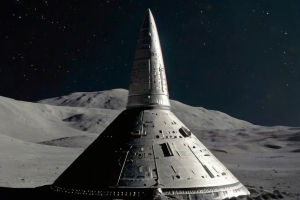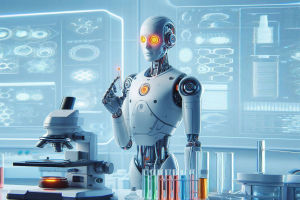Hey Lykkers! The idea that artificial intelligence (AI) could one day build another AI might sound like something straight out of a sci-fi movie. But believe it or not, this is not only a possibility—it’s already happening in some ways today.
So, how close are we to AI designing, developing, or even improving other AI systems all on its own? Let’s unpack this fascinating question and see what the future holds.
What Does It Mean for AI to Build AI?
When we talk about AI building AI, we mean one AI system creating or optimizing another AI system with little or no human intervention.
This process is often called automated machine learning (AutoML). Normally, human experts design AI models by choosing the right algorithms, tweaking lots of settings, and feeding tons of data. But with AutoML, an AI can handle many of those tasks by itself.
Imagine AI as both the architect and the builder, designing smarter and better versions of itself. This could change how AI is developed, making it faster, cheaper, and more accessible.
Where Are We Now?
Right now, AI building AI isn’t about fully autonomous robots coding brand-new systems from scratch. Instead, it looks more like AI tools helping humans by automating complex parts of AI development. Some automated systems can design image recognition models that perform as well as, or even better than, those created by experienced human engineers.
An automated systems can:
- Test thousands of different AI models
- Adjust hyperparameters (the “settings” that influence how the AI learns)
- Discover new neural network structures
This speeds up the development process dramatically and often leads to better results.
Why Is AI Building AI a Big Deal?
This technology offers several major benefits:
Speed: AI can quickly explore tons of options and find the best AI models without endless human trial and error.
Efficiency: It can spot patterns and combinations humans might miss.
Accessibility: AutoML tools allow people without deep AI expertise to create powerful AI systems.
Innovation: AI might invent novel architectures or solutions humans haven’t thought of, pushing the boundaries of AI capabilities.
Because of this, many companies and researchers are investing heavily in AutoML to accelerate AI breakthroughs.
The Challenges and Limitations
Despite all the excitement, AI building AI faces some serious challenges:
Complexity: Designing cutting-edge AI models still requires deep human understanding and creativity. Fully automating this is tough.
Resource Use: AutoML can require huge amounts of computing power, which is expensive and has environmental costs.
Ethical Concerns: If AI starts designing AI on its own, how do we ensure those systems are safe, unbiased, and transparent? Human oversight is crucial.
Creativity and Intuition: AI is great at optimization but lacks true creativity and intuition—at least for now.
Could AI Improve Itself?
Some experts talk about recursive self-improvement, where an AI upgrades its own code, making itself smarter in cycles. This idea is exciting but still largely theoretical. If it happens, it might lead to what’s called a “superintelligence” far beyond human capability.
However, most current AI systems aren’t anywhere near this level of autonomy or intelligence. Human involvement is still essential.
Why Should You Care?
AI building AI matters because it could:
- Democratize AI, making it accessible beyond big tech companies
- Accelerate breakthroughs in medicine, finance, education, and more
- Change jobs and industries by automating complex AI tasks
- Raise ethical questions about control, bias, and safety that we all need to address
Final Thoughts
So, could AI build another AI? The answer is already “yes”—to some extent—and in the future, it could become even more independent. But human creativity, judgment, and ethics will always play a critical role in guiding AI’s development.
AI building AI isn’t just a futuristic fantasy. It’s quietly reshaping technology right now—and it’s an exciting journey we’re all part of.


